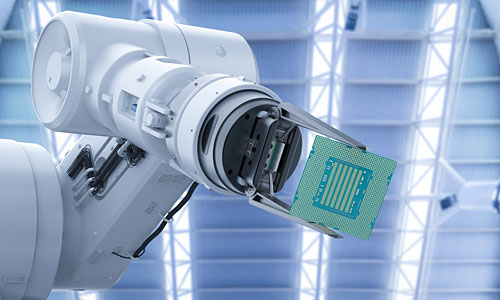Intel Investment in Fabrication Facilities March 2022
Want more free featured content?
Subscribe to Insights in Brief

In January 2022, Intel announced plans to construct a major semiconductor-manufacturing facility (comprising, at present, two individual factories) in Ohio. In a significant expansion of Intel's fabrication capabilities, construction on the plant will begin in mid- to late 2022, with first production in the plans for 2025. This move represents a rapid acceleration of the company's moves to reenter the market for foundry production. Initial investment in the facility will reach approximately $20 billion—a figure that could rise as high as $100 billion if Intel decides to develop the 1,000-acre site to its full capacity and add a further six factories. These facilities will support its Intel 18A process—a strategy that the company hopes will enable the transition from the nano regime to the angstrom regime (1 angstrom is 0.1 nanometer), with manufacturing processes occurring at the subnanometer scale. This 2025 facility, when operational, will become one of the largest and most important fabrication plants at a global level.
Implications
This development is highly significant on a number of levels and follows on from details of other significant facility expansions related to Intel's Arizona facilities that it announced in 2021. For Intel, it represents a serious move to regain market position that it all but lost to rivals such as Samsung and TSMC in recent years, particularly in the United States. However, both rival companies are also in the process of constructing their own major fabrication facilities in the United States, signaling what could be the start of a highly competitive battle for market share.
The construction of such a major (and entirely new) facility, which would become Intel's flagship fabrication plant, could also help to ease any potential future supply-chain issues, the like of which are currently having a global impact across a wide range of industrial sectors. By opening up the facility as a foundry service to other manufacturers in addition to fabricating its own chips, Intel will also de-risk the project, enabling it to attract additional revenue streams from a variety of sources. Furthermore, Intel declared that the potential for further significant investment in the site is highly likely. However, this further investment would likely attach to state and federal guarantees of benefits that link to, for example, favorable tax conditions and additional infrastructure investment.
This investment is likely to have a significant impact at a local level—beyond Intel (and its rivals)—in terms of job creation (projections detail 3,000 full-time employees in the plant in addition to 7,000 temporary construction positions). Tens of thousands of additional jobs will also develop in considerations of the wider supply chain in the local economy.